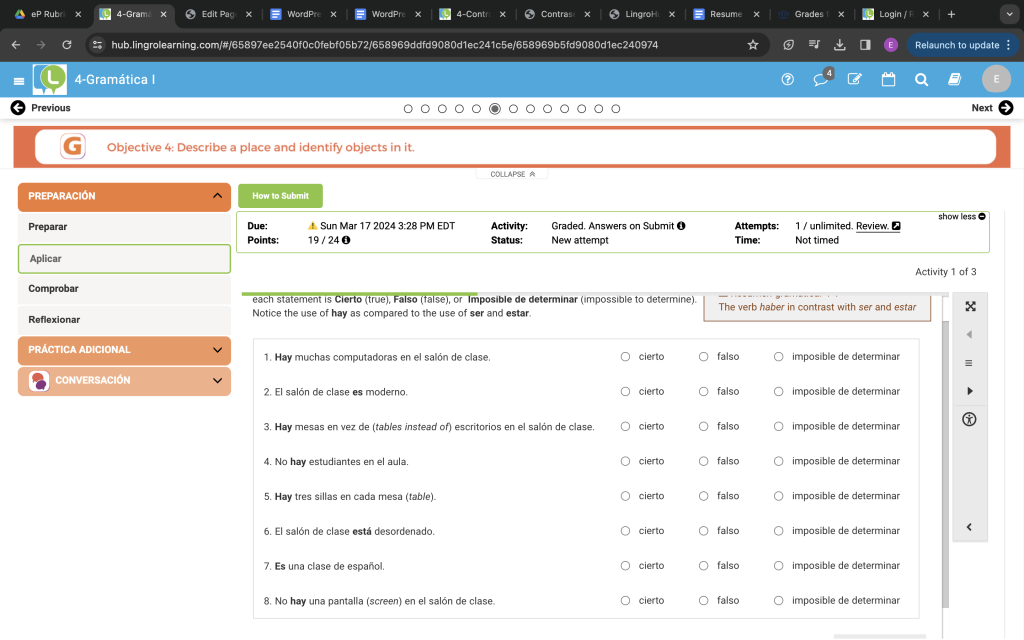Interpretive, Interpersonal, and Presentational Modes of Communication
Instructions
Exploring Culture
I gave a brief intro to this concept in the assignments tab of my portfolio , but we were required to buy a online program called Contreseña. In this program there are multiple different units that the program guides the student through while adding more knowledge each unit.
This program started off by introducing us to a unit about social media profiles and creating a mock profile based on yourself. Immediately it introduced cultural factors by allowing us to review profiles of other people from multiple different cultures. Its interesting to see that 2 different cultures can do the same thing in different ways with different words. Even 2 Spanish speaking countries can have different practices , and we were shown evidence of that in further units comparing different cultures.
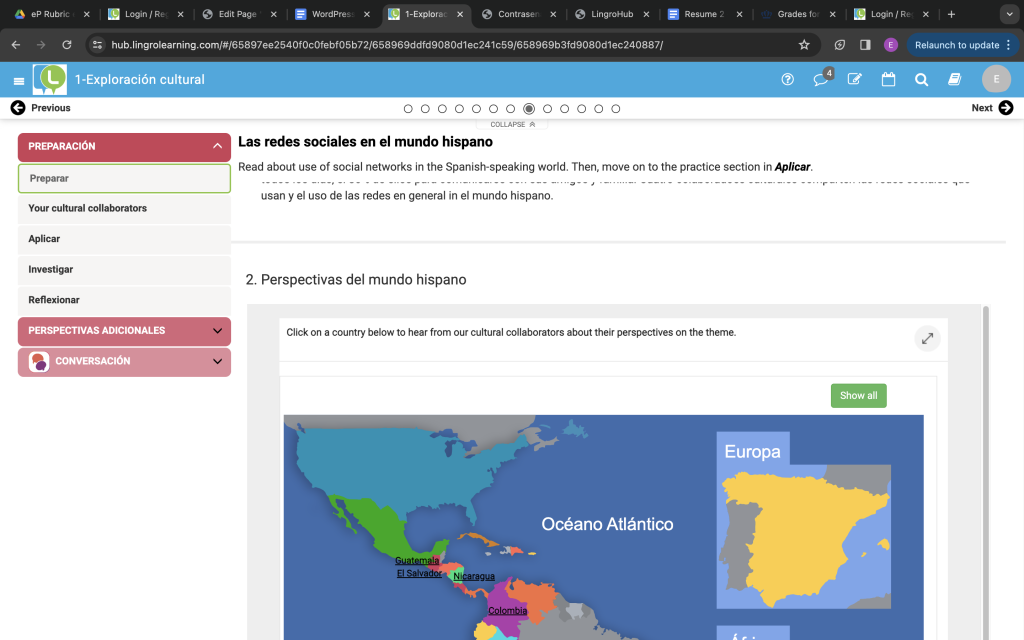
Engaging in Communities
Being a part of a community is a special feeling that not everybody who even lives in a community will feel in their lives. There are people who sit in their window and dread going outside simply because others members of the community. This is why its important to get out and be active in your community because the same person your avoiding could be going through something that you could be equipped to help them with then you all could become best friends , you truly never know. Before you right of a community go walk amongst them and beside them and feel there pain and struggle to open your mind and heart to why they act how they do.
In Spanish class this year I gained a community in my classroom of people that are trying to accomplish the same goal as me. we laughed together and exchanged information and chatted about class. Not only did I gain a community in person but also got to peak into others community online in contreseña and compare it to mine.
Interpersonal Communication
We did a lot of interpersonal communication activities in class. we would break up in to groups of 2-3 and practice conversation and have to be able to answer when called on when we discuss it as a class after. These conversations would consist of questions and responses using the vocabulary we learned in the unit and the previous ones or a new rule that we learned when making sentences.
I wasn’t the most comfortable or participative at the beginning of the year during the group speaking activities . Once I applied myself and learned the Spanish necessary for the speaking activities I feel like I opened up more and it helped me learn certain things. We practiced thing like very conjugation which helped make sense of my sentence in conversation. But pronunciation will always be a weakness for me as a non native speaker it just takes repetition.
Presentational Speaking
In one of the following paragraphs I touch on speaking assignments in class and during this section Im going to talk about out of class speaking assignments. We had to do multiple out of class speaking assignments, for my unit 4 project I recorded a video of myself talking about places on campus that I liked. During this video I used multiple vocabulary words to describe distance and things i liked about buildings on campus.
During my project as I look back I look very shy speaking because of the pronunciation and the fact that we had to include new vocabulary words. One of my weaknesses was grasping all the words because some times it would be 30+ words a unit it felt like. If I could change one thing it would be studying my vocab words more to be better prepared for speaking activities and writing actives as well.
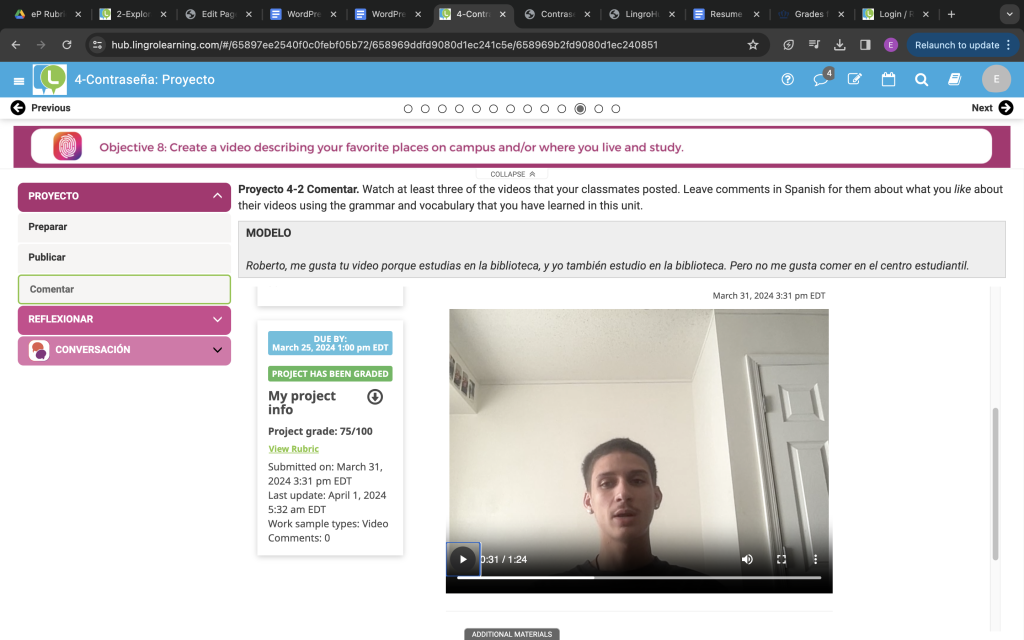
Presentational Writing
During unit 1 we learned about social media profiles and the components of them. There was a project for each unit and the project this unit was to make a social media profile for yourself with what you have learned so far.
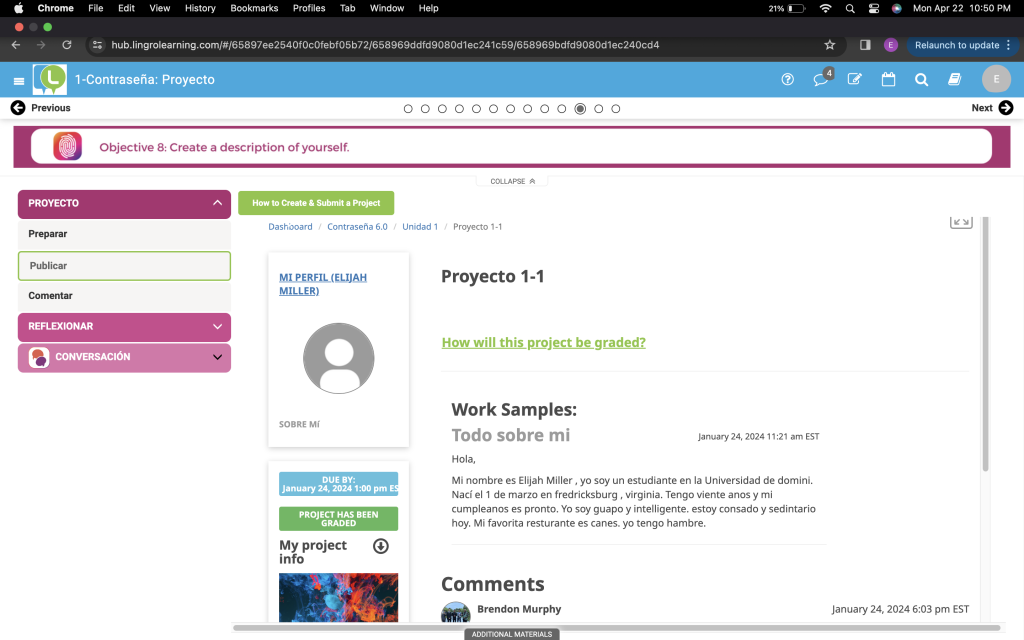
Once I completed my project i published it then my classmates had the opportunity to comment and I commented on theirs. At this point it was the first unit so i did not have a big vocabulary of Spanish , that was my biggest weakness. Also forming sentences wasn’t easy so at first I had to refer to a dictionary and google. But the cognates which are Spanish words that have similar spelling or look to an english word helped me a lot.
Interpretive Listening
In Spanish we did interpretive listening actives all the time , first we are usually presented some type of video. The video is either a learning video or an actual Spanish speaker speaking in Spanish using words and phrases we know or are learning. Then we have an assignment after or a small quiz that asks questions in relation to the video.
The Picture below is an example of an interpretive listening activity we did in unit 3 of Contreseña. During this activity as I reflect back on it I liked how the woman did not speak very fast. One thing that was challenging for me was hearing the words through her accent. Throughout each community and country of Spanish speakers there are some accents more easily understood by non native speakers and some more difficult.
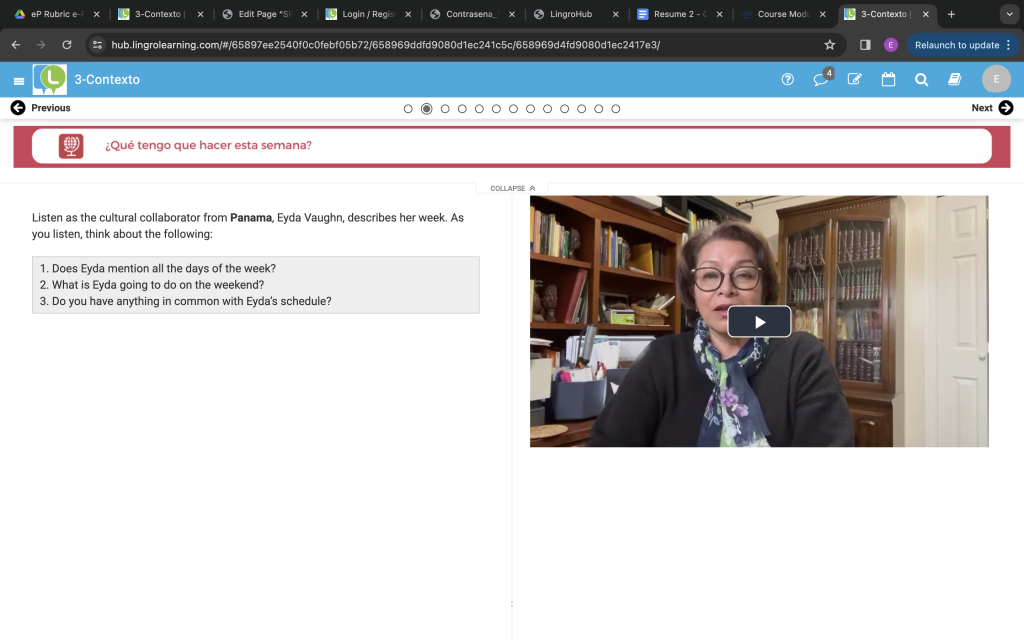
Interpretive Reading
Most of the reading activities we accomplished this year were done in the learning program Contreseña. We had to read about people and things in different situations and cultures and fill in blanks with correct words. This was involved in mostly every unit we did , a few times we actually had to read letters people wrote to others then answer questions about what we read to make sure we understood.
Reading was not as difficult as the speaking activities for me personally . Something I struggled with was conjugating the word correctly to fill in each blank. In the readings you could use a lot of context clues some times even if you do not know exactly what its saying in the passage which was one thing I used to my advantage. I think this helped us with vocabulary while helping with forming sentences to because you have to read and make sure it sounds correct then once you get the answer confirming it is you know for the next situation.
